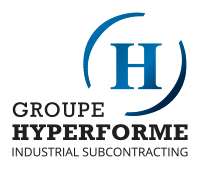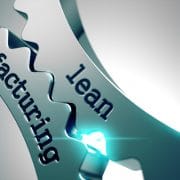Inspired by Toyota’s management method, the 14 Lean Management Principles enable an organization to become more effective and efficient. Based on the respect for people and continuous improvement, the 14 Lean Management Principles are grouped into 4 sections.
To explain it in more depth, Claude Robichaud, a partner of Groupe Hyperforme, discusses some of the advantages of applying these management processes in his industry.
LONG-TERM PHILOSOPHY
- Think in the long-term:
This first process explains that it is important to base your management decisions on a long-term philosophy, even at the expense of short-term financial goals.
THE RIGHT PROCESS WILL PRODUCE THE RIGHT RESULTS
- Flow:
This involves creating a continuous process flow to bring problems to the surface. For example, this can reduce waste.
- Pull flow:
Use “pull” systems to avoid overproduction and adjust according to true demand.
“A pull system organizes work in stations rather than on a production chain. It is especially useful for assembly factories. It identifies bottlenecks and helps avoid waste of time, energy and inventory,” explains Claude Robichaud.
- Level out the workload (heijunka):
This fourth point requires levelling out the workload and maintaining production pace. When a factory can operate this way, it is much easier for employees to complete their tasks.
- Automation and human touch:
This method targets building a culture of stopping to fix problems, to get quality right the first time. In Mr. Robichaud’s case, this includes an analysis of initial waste. In other words, before beginning production of a given piece, he conducts a series of tests and analyzes the ‘rejects’ to avoid any errors.
- Standardized tasks:
Standardized tasks and processes are the foundation for continuous improvement and employee empowerment. The concept requires the introduction of a minimum of rules and procedures to facilitate the execution of tasks.
- Visual controls:
This requires using visual controls so no problems are hidden. According to Mr. Robichaud, you don’t need high-technology equipment to apply this procedure successfully.
“We use tables that everyone has access to. This makes tracking easier for everyone,” he explains.
- Reliable technologies and methods:
The objective is to integrate only reliable, thoroughly tested technology that serves your people and processes.
For example, Mr. Robichaud explains that at Falpaco, they rely on PPAP (Pre-production Approval Part). This includes documents issued to customers that contain all of the test plans conducted before beginning production.
ADD VALUE TO THE ORGANIZATION BY DEVELOPING YOUR PEOPLE
- Grow leaders:
This method includes identifying those in a group who grasp the work and your philosophy and who can transmit it to others.
To succeed, Mr. Robichaud insists on the importance of giving employees the chance to discover their strengths and bring them to the company.
- Develop exceptional people:
This means developing exceptional people and teams who follow your company’s philosophy.
Mr. Robichaud explains that this process has nothing to do with a company’s hierarchy, but with the strengths of an individual. For example, a person who was formerly a plant director at Falpaco would be better as a coach helping their colleagues advance by passing on their management skills.
“The idea is to have as many people in the team who utilise their best talents,” explains Claude Robichaud.
- Consideration and respect for partners:
This approach is based on respecting your extended network of partners and suppliers by challenging them and helping them improve.
To apply this successfully, Claude Robichaud integrates many values such as respect, attention and collaboration. This enables him to maintain successful relationships where everyone gives their best for the customer.
CONTINUOUSLY SOLVING ROOT PROBLEMS DRIVES ORGANIZATIONAL LEARNING
- The importance of going and seeing for yourself to thoroughly understand the situation (genchi genbutsu):
The purpose of this principle is to promote face-to-face discussion between the manager and the operator. However, these discussions are shorter and allow both parties to express themselves and listen to each other on the spot.
- Make decisions slowly by consensus, thoroughly considering all options; implement decisions rapidly:
The president of Falpaco adds that it is important to invest in autonomy. If a person has the power to make a decision to have a project advance, they must not hesitate to take action!
- Become an organization that learns to learn better:
This approach requires becoming a learning organization that focuses both on relentless reflection (hansei) and continuous improvement (kaizen). For example, it can be by developing new skills or learning new techniques.
In conclusion
The Lean process is being increasingly adopted by organizations around the world. According to Mr. Robichaud, this provides several concrete advantages:
- A process for continuous improvement;
- A sense of belonging (both on projects and with the organization).
However, to complete the transition successfully, he suggests being properly informed, notably by a coach who will know how to provide the tools and methods adapted to your needs. Mr. Robichaud feels that it is a process that he will never regret.






